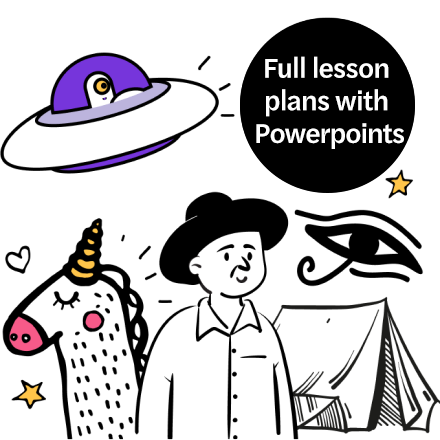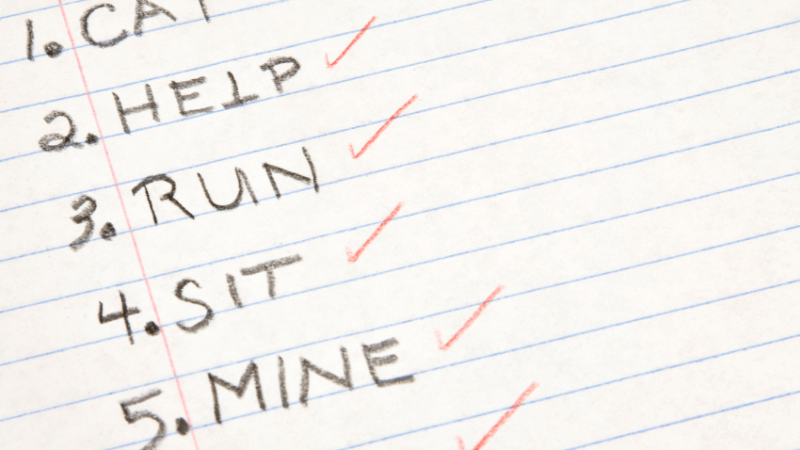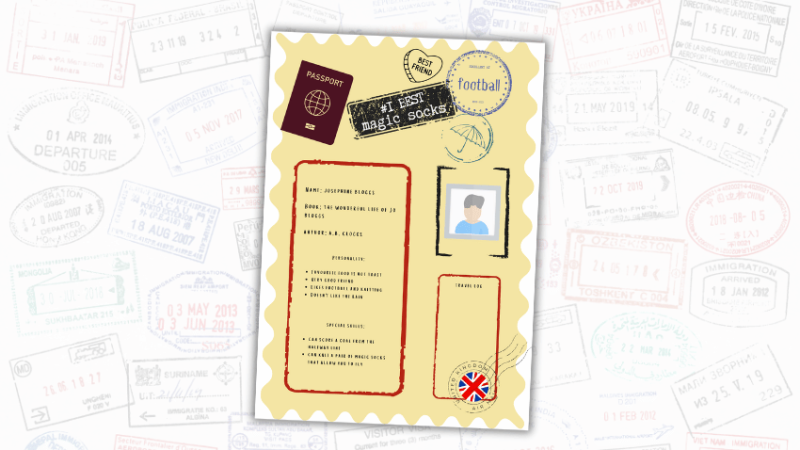The Four Key Skills That Make Children Great Writers

If we want all children to become great writers, it’s not enough to expose them to great writing. There are four key skills that we must teach, says Ros Wilson…

- by Ros Wilson

Many children’s authors fight for high-quality literature to be available in schools, but while I respect this (and support their cause), its presence alone will not ensure children learn to be successful writers.
Those of us who were born into families where one or more adults talked to us in extended and articulate speech from the moment of birth or before, as though we could understand them, established a secure and finely tuned linguistic base. If discussion, persuasion and debate were the norm, we developed – during our early years – a linguistic ‘centre’ in the brain that is highly tuned and receptive to the acquisition of new vocabulary and language. We can learn new words and phrases easily, often at only one meeting. If our subconscious ‘likes’ them, it can store them instantly – and retain the knowledge of how or where to use them to best effect. Sometimes a word may not be used for years but, given a nudge, the subconscious can still retrieve it and ‘pop’ it into our conscious mind. I am overwhelmed with amazement when I try to contemplate the wonders of this process.
Children whose language centre is not highly stimulated in the first three years of their lives do not develop the same ability. They are often not able to retain a new word at a single meeting, and may need to use it many times in order to move it from shortterm to long-term memory.
From the age of three to five, however, a lot can still be done to ‘switch’ this ability on – hence the cruciality of not just talk, but planned and prolific talk in the EYFS. From five to seven this may still be further strengthened; but if not fully activated by the start of KS2, the child will always struggle to learn new language.
That is why a system that develops both speech and writing through talk and through repetitive oral games and activities in a wealth of different contexts is empowering for so many children who, otherwise, would have little likelihood of becoming highly effective writers. This is the secret of the success of Big Writing.
The four toolkits of writing
I never set out to find such a system, even after nearly 30 years of teaching in a wide range of settings, almost all in complex and challenging circumstances. I never questioned the received doctrine – that the pathway to becoming a writer is through reading. That is the way my parents were taught, the way I and my siblings were taught, and the way every other child in the country was expected to learn. And that myth is still perpetuated today…National tests (SATs) at age seven were introduced in England in 1991, and four years later in KS2 – coinciding with my appointment as adviser for assessment in Kirklees Local Authority. Schools performing well above or below expectation in the tests always received a visit (from myself in Kirklees or from the school’s ‘contact officer’, as LA Personnel were then known). It was on one such visit that I found a team leader using a list of criteria to defend her decisions, and I asked her from where they’d been sourced. She told me that they were the SAT criteria broken down into bullets. I then asked whether she was aware that she was not allowed to do that (she was, of course) and promptly ‘stole’ her idea. It was clearly so much more efficient and manageable – giving clarity and simplicity to the process.
Over the following five years, that first emergent Criterion Scale for the assessment of writing (now the Oxford Criterion Scale for Writing) was developed and refined. During that time, I assessed over 20,000 pieces of writing to ensure its accuracy. Very rapidly, however, two revealing truths about how writing ‘works’ emerged.
The first was that there are four ‘toolkits’ – or skill sets – that go to make up writing, and that children need to be able to operate all of these toolkits simultaneously (at around 98 per cent plus accuracy) to be writing at the very highest standard possible in primary education. Simply put, in order to become great writers, children need to be able to:
- Interpret the type of text to be written correctly, including the common features and characteristics;
- Respond correctly and appropriately (emotionally, factually and to audience or purpose) to the stimulus;
- Operate all four ‘basic skills’ (grammar, handwriting, spelling and punctuation) accurately and with automaticity (not requiring conscious management, except in rare searches for an elusive word or spelling);
- Use vocabulary and language structures appropriate to high-quality writing (‘writer’s voice’), which is usually different to the ‘voice’ of daily speech.
The answers to generations of struggling writers were immediately obvious. We, as teachers, must teach all four of these toolkits thoroughly, giving children enough practice to ensure full mastery and never accept less than the best, whatever the task, in order to ensure they move from conscious control to automaticity.
However, the revelations that came through constant use of The Criterion Scale for Writing did not end there. Although schools have always taught the four basic skills to some degree, the fourth Toolkit – ‘writer’s voice’ – has never been taught in a clear and structured way that every child can understand. Rather, children have been expected to learn to write through being exposed to quality pieces of text and through being told to ‘do it like this’. This then, needed to be my priority.
Developing the ‘writer’s voice’
Using the same techniques that had led to the identification of the four toolkits, the search for patterns in higher level ‘writer’s voice’ commenced and it soon became clear that there are, again, four key elements (the ‘four generic targets’) that are the main components of ‘writer’s voice’. These are:
- The range of vocabulary a writer uses, including ambitious vocabulary;
- The range of ways a writer joins, links, connects and extends language (connectives) and the impact of these on sentence structure;
- The range of ways a writer opens sentences and the impact of these on sentence structure;
- The range of punctuation a writer can use accurately, appropriately and effectively, including for impact.
Within these four elements it was then possible to identify the true ‘power features’ of writing and to create and develop ageappropriate approaches to teaching all the above in ways that would be enlightening, empowering and enjoyable for all children of primary age. Thus it was that ‘Big Writing’ was born.
Those children who have grown up in homes where articulate discussion and debate are the norm are likely to be highly articulate themselves, and they usually grasp the four generic targets quickly and easily. They will understand, as soon as taught or told, that overuse of any element is undesirable and they will rarely use language inaccurately or inappropriately. When they do, it usually only requires one conversation to correct the error. Many children, however, are starting from a more deprived language base and they will naturally make errors in their early attempts to apply the sophisticated features of high-level language. We call this early period of errors the ‘emergent phase’ and see it as a positive indicator that the child is starting to diversify his or her use of language, rather than as a negative proof that the approach does not work. (Children learning English as an additional language may also need to pass through this stage.)
The uninitiated, however, are not aware that this is a crucial phase for many children and that, if the teacher skilfully applies the many techniques and approaches recommended, the child will pass through this phase quite quickly and settle into an accurate and ever-developing and maturing ‘voice’. When the decriers of this approach respond with indignation to the misunderstandings evident in the early attempts of some young children, they are doing themselves and the people who care about those children a disservice. Rather, they should study the evidence, visit the schools where successful long-term implementation has led to incredible standards of writing and reflect on the damage caused by perpetuating practice from bygone years when so few achieved highly and those that did, did so mainly despite the system, not because of it.
Recent research in the United States of America has shown interesting parallels in whether children are taught to use fluent cursive handwriting or allowed to process electronically most of the time. Dr Karin James of the University of Indiana suggests that the process of making and correcting mistakes in formation of letters may be integral to the learning of them. Her observations suggest that it is only the actual effort of trying to form the letters that engages the brain’s motor pathways and delivers the learning benefits of handwriting. Dr James is comparing children who physically form letters with those who only watch others doing it, or who trace letters to learn.
“When a kid produces a messy letter,” Dr James says, “that might help him learn it.” We maintain the same premise works for developing accurate use of the art form that is ‘writer’s voice’. For many of the children we teach, it is only through trial and error that the true beauty of language will be developed.
Have a word
Quick activities to improve children’s vocab…
1. Call my bluff
A. The Teacher puts a ‘WOW’ word (not yet known to children) on the board, followed by three definitions, only one of which is right, e.g. Copious = 1) A group of trees 2) In large amounts 3) A warm cloak.
B. The children (in twos or threes) read the word and discuss each definition in turn.
C. They ‘guess’ which may be the right meaning.
D. They record A, B or C on their whiteboards or scrap paper, and hold up their answer when asked by the teacher. (If there is time, children can walk around and discuss their answers with other groups.)
E. If time is short, the teacher gives the right answer. Otherwise, there is a race to find the right meaning in the dictionary.
2. Make me up
The teacher uses the few minutes at the end of a lesson to ask children to make up sentences using new WOW words they are learning. A similar activity can also be carried out during, or at the end of lessons, in foundation subjects. For example, if children are learning about volcanoes in geography and have just been introduced to the word ‘copious’, they could be asked to make up a sentence about what happens during a volcanic eruption using the new vocabulary. (“Copious amounts of lava spew from the crater of a volcano during an eruption.”)










